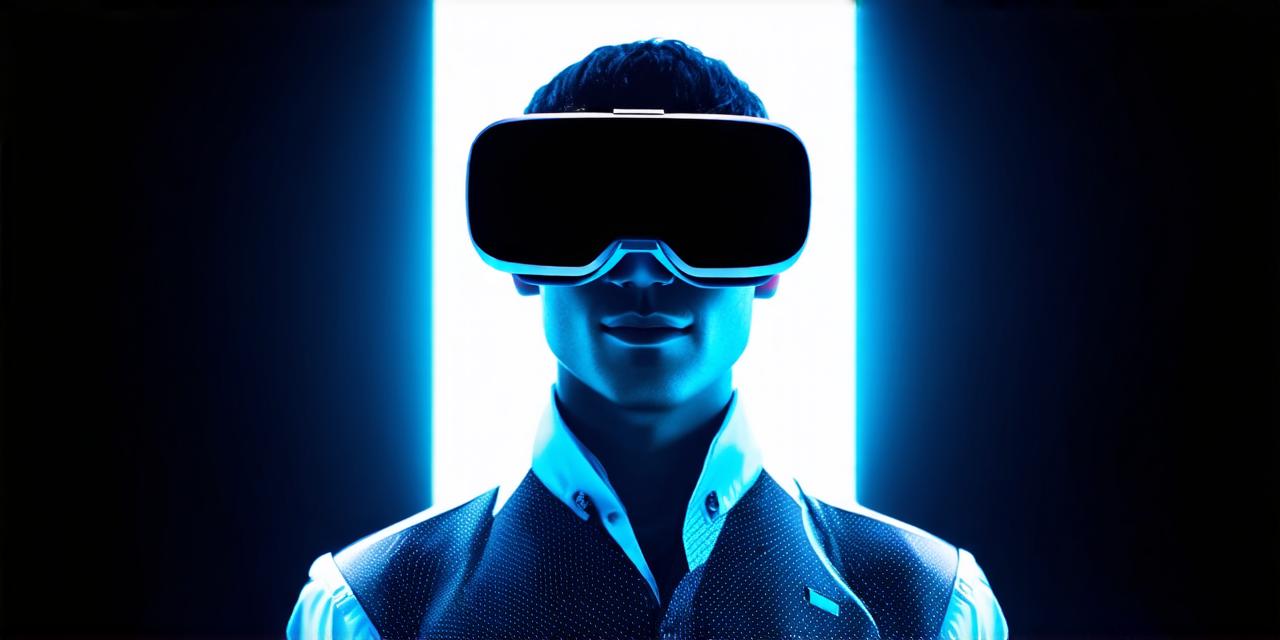Virtual reality (VR) technology has come a long way since its inception. It’s an exciting time for developers, with countless opportunities to create immersive and engaging experiences that were once the stuff of science fiction. However, as with any new technology, it comes with its own set of risks. In this article, we’ll explore the potential dangers associated with VR headsets, and discuss how developers can mitigate these risks to ensure a safe and enjoyable user experience.
Virtual Reality Headset-Induced Motion Sickness
One of the most common issues associated with VR is motion sickness. This occurs when the brain’s inner ear detects conflicting signals from the eyes and ears, causing nausea, dizziness, and sometimes even vomiting. Motion sickness can be especially problematic for people who are prone to it in real life, such as those with a history of seasickness or motion sickness medication.
There are several factors that can contribute to motion sickness in VR, including:
- Poor tracking: If the VR headset is not tracking the user’s movements accurately, this can cause disorientation and lead to motion sickness.
- Rapid frame rates: High frame rates can cause blurring and disorientation, which can exacerbate motion sickness.
- Lack of peripheral vision: VR headsets often have a limited field of view, which can make it difficult for the brain to adjust to the virtual environment and can contribute to motion sickness.
- Inadequate calibration: If the VR headset is not properly calibrated to the user’s eyesight and head shape, this can cause discomfort and lead to motion sickness.
There are a few steps that developers can take to reduce motion sickness in their VR experiences. First, they should aim for a smooth and steady frame rate, ideally between 60 and 90 frames per second. They should also consider using techniques such as motion blur or post-processing effects to reduce the amount of visual noise in the virtual environment. Additionally, developers should ensure that their VR headset is properly calibrated to the user’s eyesight and head shape.
bekannten Beschwerden wie Sehstörungen oder Brillengläser.
Virtual Reality Headset-Induced Eye Strain
Another common issue associated with VR is eye strain. This can occur when the user has to focus on a virtual environment for extended periods of time, causing discomfort and fatigue. Eye strain can be especially problematic for people who already have visual issues such as astigmatism or nearsightedness.
There are several factors that can contribute to eye strain in VR, including:
- Poor tracking: If the VR headset is not tracking the user’s movements accurately, this can cause disorientation and lead to eye strain.
- Lack of depth perception: The virtual environment in VR can sometimes lack depth perception, which can make it difficult for the brain to adjust and can contribute to eye strain.
- Inadequate calibration: If the VR headset is not properly calibrated to the user’s eyesight and head shape, this can cause discomfort and lead to eye strain.
There are a few steps that developers can take to reduce eye strain in their VR experiences. First, they should ensure that their VR headset is properly calibrated to the user’s eyesight and head shape. They should also consider using techniques such as depth cues or parallax effects to enhance the sense of depth in the virtual environment. Additionally, developers should aim for a comfortable and natural viewing distance, ideally between 2 and 4 feet.
Virtual Reality Headset-Induced Eye Damage
While rare, there have been reported cases of eye damage caused by prolonged use of VR headsets. This can include corneal ulcers, dry eyes, and even cataracts. These risks are generally associated with poor hygiene practices and extended use of the VR headset without proper breaks or cleaning.
To mitigate these risks, developers should encourage users to take regular breaks and clean their VR headsets after use. They should also ensure that users have access to eye care products such as eyedrops and lubricants to prevent dry eyes. Additionally, developers should provide clear instructions on how to properly wear and care for the VR headset to minimize the risk of damage.
Case Studies: Real-World Examples of VR Dangers
There have been several high-profile cases of VR-related accidents and injuries in recent years. One such case involved a man who fell from a balcony while wearing a VR headset, causing him to lose consciousness and suffer from a concussion. Another case involved a woman who became disoriented while using a VR headset and stumbled off a cliff, resulting in a fatal fall.
These cases highlight the importance of proper safety measures when using VR headsets. Developers must ensure that their VR experiences are safe and do not pose a risk to users’ physical or mental health. This includes providing clear instructions on how to use the VR headset safely, as well as implementing safety features such as motion sensors and emergency stop buttons.
Personal Experiences: Lessons Learned from Developers
As developers, we have firsthand experience with the risks associated with VR technology. One developer shared their personal experience with motion sickness in VR, explaining that they had to adjust their frame rate and field of view to reduce discomfort.

Another developer discussed the importance of providing clear instructions for users, stating that “one mistake can lead to serious consequences.”
Research: Studies on VR Safety and Risks
There have been several studies conducted on the safety and risks associated with VR technology. One study found that motion sickness was the most common issue reported by users, followed by eye strain and fatigue. Another study found that prolonged use of VR headsets could lead to vision problems such as dry eyes and corneal ulcers.
These studies highlight the importance of addressing the potential risks associated with VR technology in order to ensure a safe and enjoyable user experience.
Expert Opinions: What Experts Say about VR Safety
There are several experts in the field of VR development who have weighed in on the topic of safety. One expert stated that “safety is the top priority for any developer working with VR technology,” while another emphasized the importance of proper calibration and hygiene practices to minimize risk.
These opinions underscore the need for developers to be aware of the potential risks associated with VR technology and to take steps to mitigate those risks in their own projects.
Summary: The Importance of VR Safety for Developers
In conclusion, virtual reality headsets have the potential to cause harm or death if not used properly. As developers, it is our responsibility to ensure that our VR experiences are safe and do not pose a risk to users’ physical or mental health. This includes providing clear instructions for users, implementing safety features such as motion sensors and emergency stop buttons, and taking steps to minimize the risk of damage through proper hygiene practices.
By prioritizing safety in their projects, developers can help to ensure that VR technology continues to evolve in a responsible and ethical manner, providing a safe and enjoyable experience for all users.
